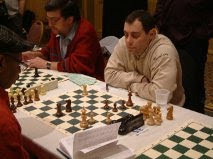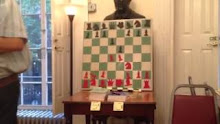I would like you to analyze the following position. It comes from the final game between Garry Kasparov and Anatoly Karpov.
According to Robert Byrne's analysis in The New York Times, "After 64.Kg2, Karpov could no longer keep the bishop from reaching the b1-h7 diagonal. Thus, 64...Qd5+ 65.Bf3 Qc5 66.Be4 will win the black g-pawn and unhinge the defense."
But I say, how about this? After 64...Qd5+ 65.Bf3 Qc5 66.Be4, Black plays 66...Qa3. And if 67.Bxg6, then 67...Nxg6 68.Qxg6 Qf3+! 69.Kg1 Qg2+ draws.
Ron Ratner
Cranford, NJ
* * * * * * * * * * *
Your attempt at stalemate is ingenious, Ron. But unfortunately for Karpov, White can easily avoid this trap by 66...Qa3 67.Kh3 Qb4 68.f3 (but not 68.Bxg6? Qg4+ 69.Kh2 Nxg6) Qc5 69.f4 Qa3 70.Bxg6 Nxg6 71.Qxg6 Qxg3+? 72.Qxg3.
Maybe I should say "fortunately for Karpov" because it would be a long three years for him if he had resigned a drawn position.
{This article originally appeared in Atlantic Chess News in 1988}




























